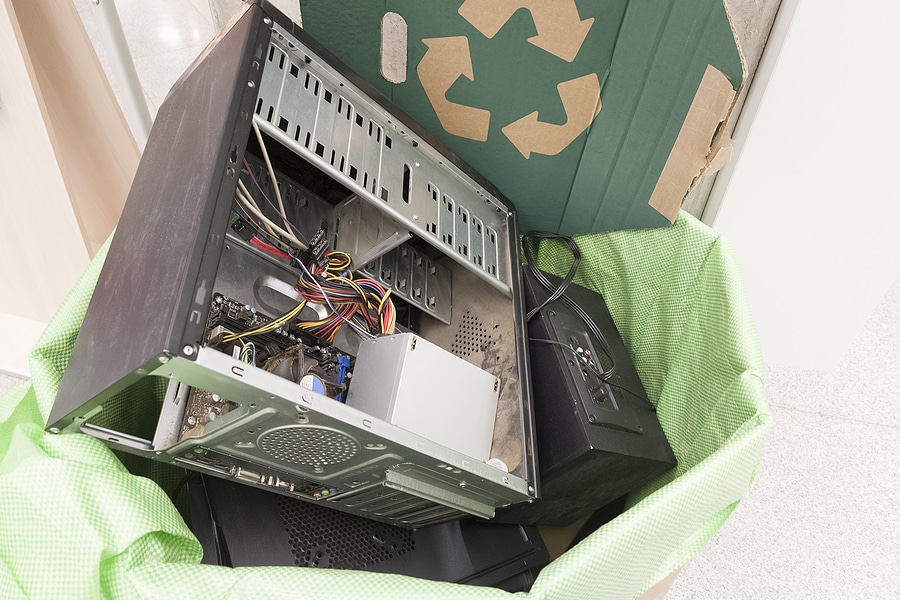Recycled E-Waste: Where Does It Go?

Computing devices and equipment have grown at a rapid pace, making it essential for businesses to continuously upgrade and make improvements to their infrastructure to stay competitive. However, the increased reliance on electronics has led to a growing amount of e-waste that companies must learn to deal with.
The Problem of E-Waste
E-waste is both costly and bad for the environment. Old drives and storage devices that have been improperly disposed of present a huge security risk to companies. This opens them up to potential attacks as well as legal liabilities.
Luckily, electronics recycling provides a reliable method for recovering value while securely disposing of assets.
Most people don’t give it a second thought, but there’s actually a fairly complicated process for disposing of recycled e-waste.
Where Does Recycled E-Waste Go?
When companies are done with their e-waste, they don’t just throw it away. Instead, it goes through an IT Asset Disposal (ITAD) process that ensures any valuable digital assets or private user data aren’t exposed.
Equipment that can’t be recovered goes through a destruction process, where it’s either shredded or wiped to remove any existing data. Any recyclable materials then go through a chain of handlers until they’re either resold into the market or recycled into their core commodities for reuse.
Sorting
The first step in the process of disposing of e-waste is sorting. This is fairly complicated in practice but generally consists of separating usable parts from unusable ones. Equipment is carefully reviewed to determine if they area able to be reused in their original form, or must be torn down and recycled as commodities.
Processing or Resale
Once they’ve been sorted, devices slated for end-of-life (EOL) will be broken down and separated into various plastics, metals, and other materials and sent for processing. If you are using a certified vendor like SEAM, all downstream processors must also be certified and/or audited to ensure environmentally-safe and responsible practices. These materials can be used in new chips for computers and other electronics, as well as other uses for metal, glass and plastics, which reduces the need for mining these limited resources.
Equipment that is able to be reused as-is, undergoes a thorough data wiping and erasure process, followed by testing and refurbishment as needed. Equipment is then remarketed through various resale channels to get the highest possible return for the customer.
While it might seem like a closed loop, the sad truth is that many businesses and consumers don’t use certified recyclers when disposing of their ewaste, and much of it ends up in landfills, where it either sits indefinitely or gets incinerated. Such an end not only wastes valuable materials but also allows toxins to enter the environment, contaminating local ecosystems.
SEAM Manages Your E-Waste From Start to Finish
Is your company’s e-waste disposal process becoming unmanageable? Having a partner that thoroughly understands the electronics recycling process will ensure you retain maximum cost-savings on your old equipment.
With Secure Enterprise Asset Management (SEAM), you won’t be left wondering whether your e-waste was properly handled. We offer secure data destruction and disposal backed by proprietary tracking and reporting capabilities.
Companies in North Dakota and South Dakota that want to reduce their e-waste turn to SEAM for efficient value recovery and remarketing services. Our environmentally safe process is carried out following strict certification requirements, meaning you can maintain compliance and avoid liabilities.
Don’t let your e-waste get out of hand. Contact SEAM today!
SEAM provides IT recycling and data destruction services including onsite shredding and hard drive wiping to South Dakota, North Dakota, Minnesota, Iowa, and Nebraska.
Schedule a pickup or contact us for more information.





